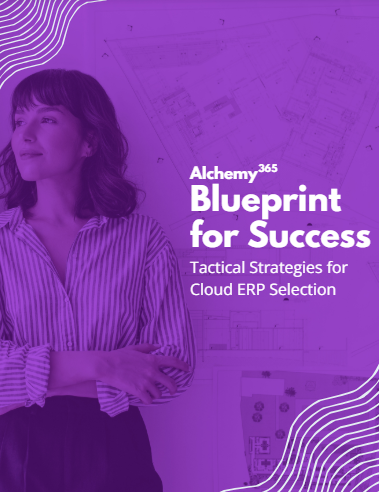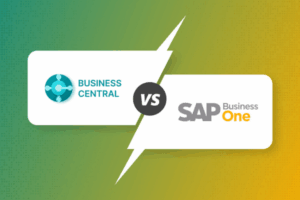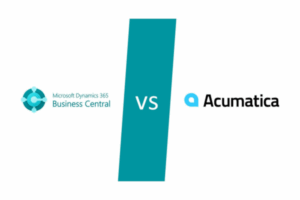What Is Medical Device ERP?
Medical device ERP is enterprise resource‑planning software designed for regulated device manufacturing. It combines:
- Validation‑ready code – documented and testable out of the box
- End‑to‑end traceability – lot and serial data tie every component to every finished device
- Embedded quality management – CAPA, complaints, and risk files live inside the same database as production
Key Modules
| Module | Primary Goal | Typical Outputs |
|---|---|---|
| Production | Build to exact routing and BOM | Electronic device history record (eDHR) |
| Quality | Track non‑conformance and CAPA | Audit trail, trend charts |
| Regulatory | Manage submissions and standards | 510(k) support files, ISO forms |
| Finance | Real‑time cost roll‑ups | Margin by SKU, plant, or region |
Regulatory Drivers: Why Compliance Shapes Every Decision
FDA 21 CFR Part 820
Device history records must be complete and accessible. Electronic signatures must meet Part 11 rules. A well‑designed medical device ERP platform captures approvals and date stamps automatically so inspectors see what they need.
ISO 13485
Certification focuses on documented quality processes. Built‑in CAPA workflows let you log, investigate, and close issues in one place.
EU MDR and Other Global Agencies
EU MDR, Health Canada, and Japan’s PMDA each add labeling or UDI requirements. Centralizing data in medical device ERP lets global plants follow local rules while headquarters enjoys a single compliance view.
Must‑Have Features in a Medical Device ERP
| Feature | Why It Matters | Signs It Works Well |
|---|---|---|
| Lot and serial traceability | Isolate suspect units fast | Forward and backward lookup in under 60 seconds |
| eQMS integration | No duplicate data entry | CAPA links directly to production record |
| Electronic signatures | Meets Part 11 | Two‑factor sign‑off stored with the record |
| Device master record | One set of specs | Automatic version‑control alerts |
| Recall workflow | Speed containment | Prebuilt RMA and notification templates |
Learn more: Must Have Medical Device ERP Features
Business Benefits Across Departments
- Quality & Regulatory – 50 percent less audit prep time
- Operations – 20 percent lower scrap thanks to real‑time defect trends
- Engineering – Same‑day effectivity of ECOs instead of a week of paper cycles
- Finance – Margin reports that factor true labor, materials, and overhead
- Executive Team – Confidence to enter new markets without compliance delays
Many firms recover their medical device ERP investment in 18 to 24 months.
Cloud vs On‑Premise Deployment
| Factor | Cloud Medical Device ERP | On‑Premise Medical Device ERP |
|---|---|---|
| Validation effort | Vendor regression testing included | You own IQ, OQ, PQ |
| Scalability | Add plants quickly | New hardware required |
| Cybersecurity | 24×7 SOC monitored | Depends on internal IT |
| Up‑front cost | Subscription, low CapEx | High license and server spend |
| Disaster recovery | Built‑in regional failover | You maintain secondary site |
Costs You Should Expect
| Cost Area | Mid‑Market Range | Notes |
|---|---|---|
| Licenses or subscription | $1,200 – $2,000 per named user per year | Some vendors bundle eQMS |
| Implementation & validation | $125k – $500k | Depends on sites and modules |
| Training & change management | 10 – 15 percent of implementation | Role‑based plus self‑paced |
| Annual support & upgrades | 18 – 22 percent of license value | Often included in SaaS fee |
Validation hours grow with customization. Keep processes close to best practice to contain cost.
Learn more: How Much Does Medical Device ERP Cost?
Calculating ROI
Formula
ROI (%) = (Annual Benefits – Annual Costs) / Annual Costs × 100
Typical Annual Benefits
| Benefit | Low | High |
|---|---|---|
| Audit prep hours saved | 400 | 1,000 |
| Scrap reduction | $75k | $300k |
| Faster product launch | 2 months | 6 months |
| Inventory reduction | 8 percent | 15 percent |
Implementation Roadmap
Many mid‑market firms follow this 20‑week plan.
| Week | Activity | Key Deliverables |
|---|---|---|
| 1‑2 | Kickoff & URS workshops | Approved User Requirement Specification |
| 3‑4 | Fit‑gap & solution design | Configuration blueprint |
| 5‑6 | Data clean‑up sprint | Validated legacy item and vendor lists |
| 7‑9 | Configuration & extensions | Test environment |
| 10‑12 | IQ testing | Signed IQ protocol |
| 13‑15 | OQ testing | Signed OQ protocol |
| 16 | User training | Role‑based manuals and quick guides |
| 17‑18 | PQ & cut‑over rehearsal | Final signed PQ |
| 19 | Go‑live | Hyper‑care team on site |
| 20 | Post‑launch optimization | KPI baseline and improvement plan |
Compliance Checklist
- URS approved and version controlled
- Risk assessment matrix completed
- IQ, OQ, PQ protocols executed and signed
- Electronic signature controls validated
- Data migration audit trail stored
- Training records linked to each user
- CAPA process tested end‑to‑end
- Change‑control procedure updated
Choosing the Right Implementation Partner
When selecting the team that will bring your medical device ERP to life, evaluate each contender in three key areas:
-
Proven Industry Expertise
-
Look for partners who have delivered successful ERP projects for medical‑device manufacturers that live under FDA and ISO 13485 regulations.
-
Confirm they understand device history records, CAPA workflows, and electronic signatures—core requirements your system must support from day one.
-
-
Clear, Documented Validation Process
-
Ask for a step‑by‑step plan that covers requirements gathering, risk analysis, module‑by‑module testing, and end‑user training.
-
Require evidence of how they trace each requirement through testing and how they handle IQ, OQ, and PQ documentation to keep auditors happy.
-
-
Commitment to Long‑Term Support
-
Choose a partner that stays onboard after go‑live with upgrade paths, compliance reviews, and performance tuning.
-
Make sure they offer proactive monitoring and quick‑turn issue resolution, so your ERP evolves alongside new regulatory demands and business growth.
-
Focusing on these three pillars—expertise, validation, and ongoing support—will help you secure an implementation partner who keeps your ERP investment compliant, efficient, and future‑ready.
📌 Related Reading:How Long Does It Take to Implement a Medical Device ERP?
Common Mistakes and How to Avoid Them
| Mistake | Prevention Tip |
|---|---|
| Underestimating data clean‑up | Assign a dedicated owner and cleansing tools |
| Over‑customizing the system | Start with base configuration, then evaluate gaps |
| Skipping change management | Communicate early and offer hands‑on labs |
| Ignoring cybersecurity controls | Map user rights to least privilege |
Frequently Asked Questions
Do we still need PLM or MES?
Some medical device ERP suites include basic PLM and MES modules. Deep design control or shop‑floor sequencing may still require best‑of‑breed tools.
How long does validation take?
Plan four to eight weeks for a standard configuration. Heavy customization can double that time.
Can we roll out by plant?
Yes. Pilot in one site, refine, then clone settings for the rest.
Does cloud deployment limit custom code?
SaaS models favor low‑code extensions. Most compliance functions are configurable, not customizable, which reduces validation load.
How does the system handle UDI?
The database stores device identifiers and pushes them to labeling systems through standard APIs.
Does ERP replace eQMS?
If the suite has CAPA, audit, and training modules, it can. Some firms still integrate a specialized eQMS for deeper reporting.
Can we automate supplier quality?
Supplier portals let vendors upload certs and respond to SCARs directly in medical device ERP.
How often should we revalidate?
Revalidate after major upgrades or process changes. Minor patches usually need only regression testing.
Next Steps
Ready to see medical device ERP live? Book a discovery call with an Alchemy 365 specialist. You will receive:
- A personalized demo focused on your compliance pain points
- The downloadable compliance checklist
- An ROI calculator worksheet you can share with leadership





